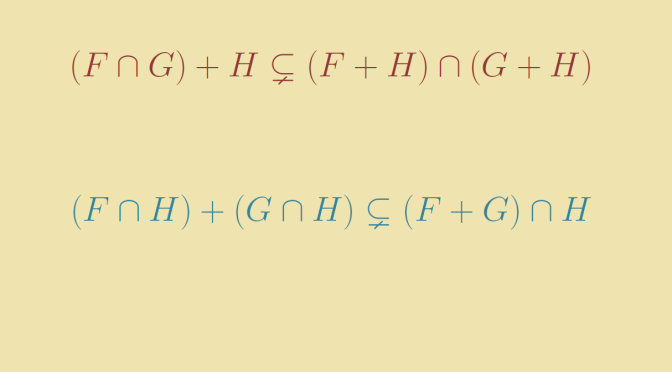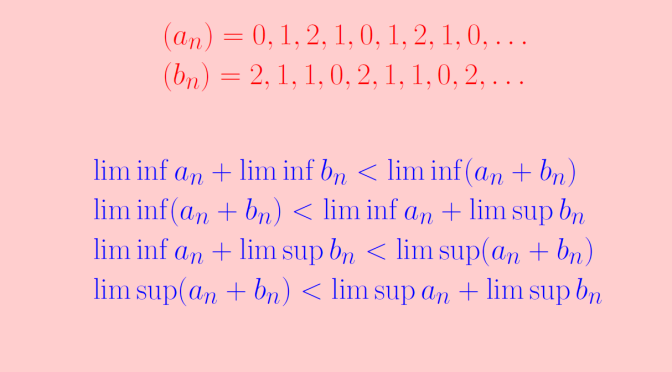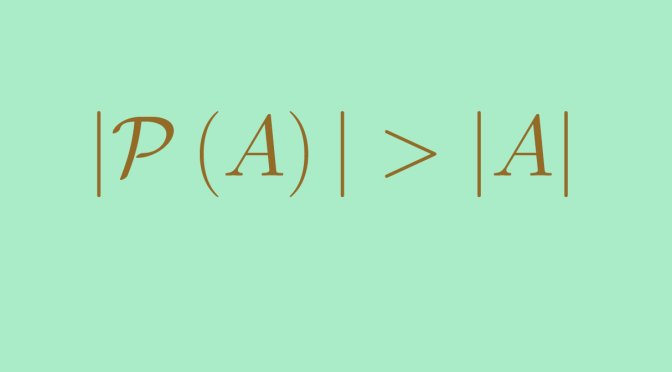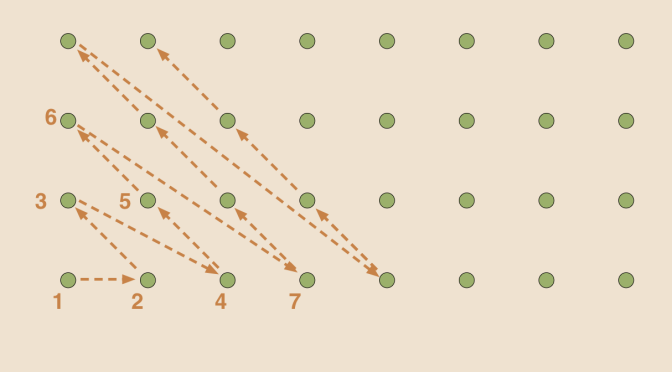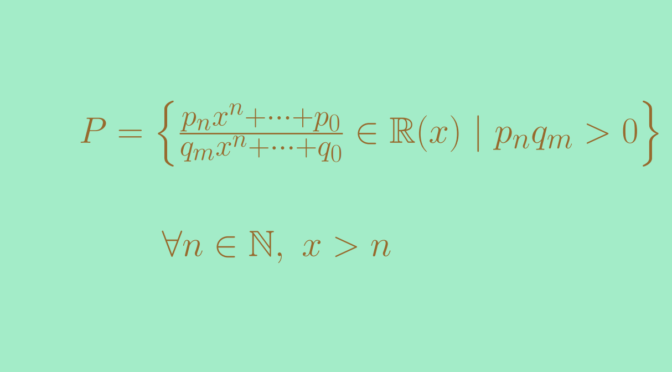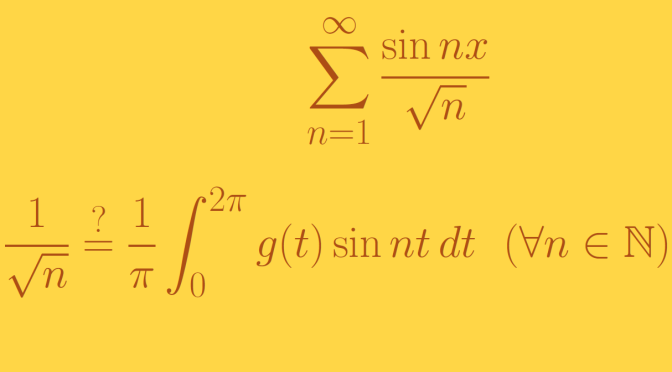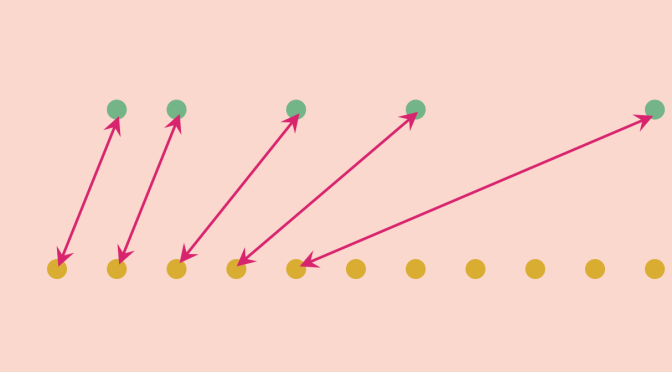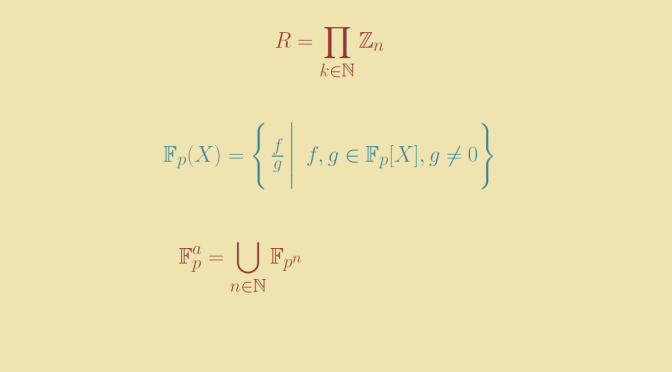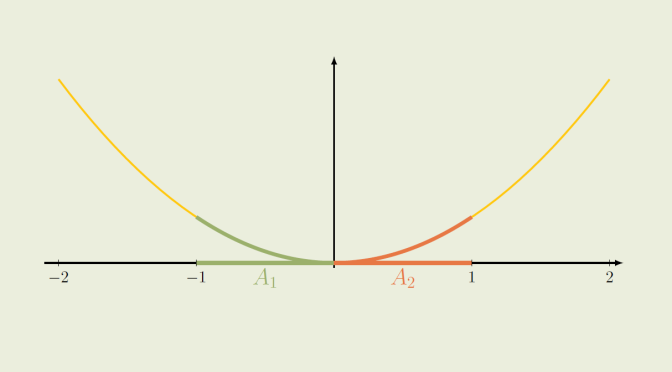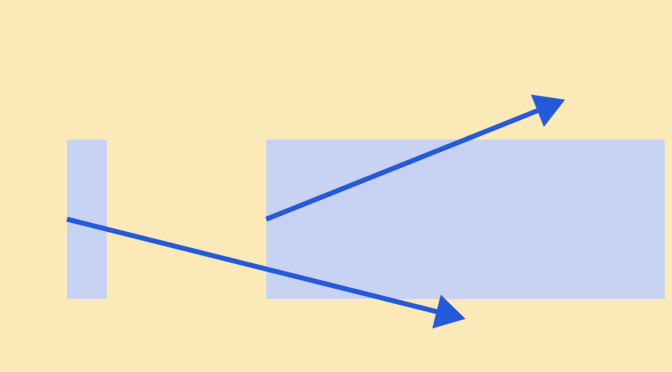Let’s play with balls in a metric space \((M,d)\). We denote by
- \(B_r(p) = \{x \in M : d(x,p) < r\}\) the open ball.
- \(B_r[p] = \{x \in M : d(x,p) \le r\}\) the closed ball.
A ball of radius \(r\) included in a ball of radius \(r^\prime < r\)
We take for \(M\) the space \(\{0\} \cup [2, \infty)\) equipped with the standard metric distance \(d(x,y)=\vert x – y \vert\).
We have \(B_4(0) = \{0\} \cup [2, 4)\) while \(B_3(2) = \{0\} \cup [2, 5)\). Despite having a strictly smaller radius, the ball \(B_3(2)\) strictly contains the ball \(B_4(0)\).
The phenomenon cannot happen in a normed vector space \((M, \Vert \cdot \Vert)\). For the proof, take two open balls \(B_r(p),B_{r^\prime}(p^\prime) \subset M\), \(0 < r^\prime < r\) and suppose that \(p \in B_{r^\prime}(p^\prime)\). If \(p=p^\prime\) and \(q \in B_{r^\prime}(p^\prime) \setminus \{p^\prime\}\) then \(p + \frac{\frac{r+r^\prime}{2} }{\Vert p q \Vert} p q \in B_r(p) \setminus B_{r^\prime}(p^\prime) \). And if \(p \neq p^\prime\), \(p \in B_{r^\prime}(p^\prime)\) then \(p^\prime + \frac{\frac{r+r^\prime}{2} }{\Vert p^\prime p \Vert} p^\prime p \in B_r(p) \setminus B_{r^\prime}(p^\prime) \).
An open ball \(B_r(p)\) whose closure is not equal to the closed ball \(B_r[p]\)
Here we take for \(M\) a subspace of \(\mathbb R^2\) which is the union of the origin \(\{0\}\) with the unit circle \(S^1\). For the distance, we use the Euclidean norm.
The open unit ball centered at the origin \(B_1(0)\) is reduced to the origin: \(B_1(0) = \{0\}\). Its closure \(\overline{B_1(0)}\) is itself. However the closed ball \(B_1[0]\) is the all space \(\{0\} \cup S^1\).
Again one can prove that for a normed vector space this cannot happen. The closure of an open ball is the closed ball for a normed vector space.

